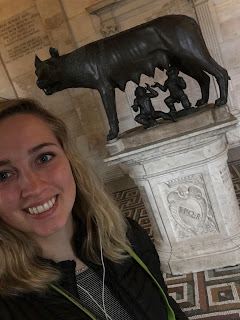By: Michelangelo in 1501-1504
Located in Galleria dell' Accademia in Florence, Italy
This statue of David is very well known all throughout Italy. The medium that Michelangelo used is difficult especially if he made mistakes, where he then would have to start all over again. The artist fulfills the role of allowing people to see the world in new and innovative ways. This statue is created in great detail and shows that Michelangelo had great knowledge of the human body in order to do this sculpture in such great detail. According to Stewart, Michelangelo would sneak in to see cadavers in order to study what humans actually looked like so he could portray them in his sculptures and paintings accurately. This artist also gives form to hidden universal truths by portraying the human body exactly how it is. The human body is very complex and the way that Michelangelo sculpted it almost idealizes the image. This work is so well known due to the fact that the artist had this immense amount of knowledge about the human body during this particular time period.










